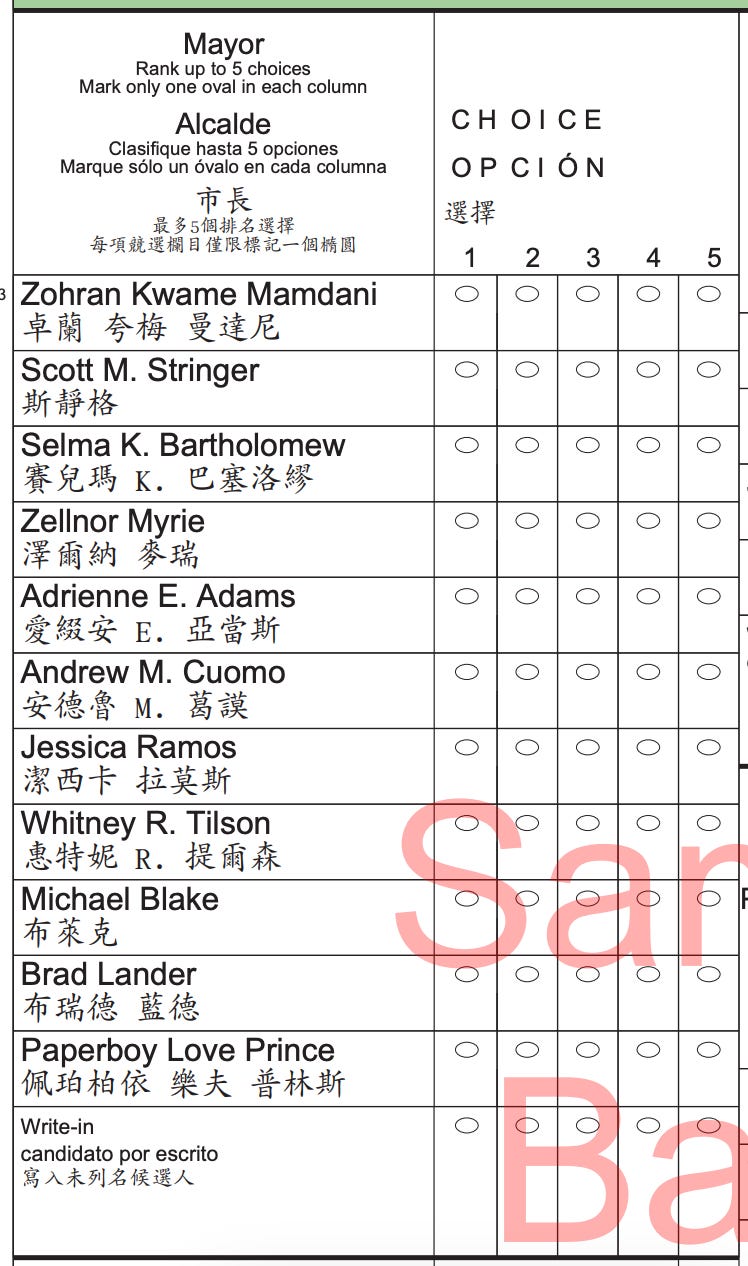Democrats in New York City are about to pick their nominee to become the next mayor. Current democratic Mayor Eric Adams is now running as an independent, so the field is wide open for this primary.
This race, regardless of who wins, could be a window into where this party identity lies. To say they’ve been facing a crisis is an understatement.
Not only will we find out a winner, but with Ranked Choice Voting, we’ll learn more about what kind of democrats are in America’s largest city.
Ranked Choice Voting was approved in New York City in 2019, meaning this is the third time New Yorkers will vote in this way. The first time was the 2021 Democratic mayoral primary.
Alaska and Maine are the only two states to completely adopt the system statewide. Otherwise, local jurisdictions have adopted separately. Nine cities are set to implement in the future.
Source: Fair Vote
Here are answers to the five most important questions about this issue:
1. WHY ARE SOME CITIES/STATES CHOOSING TO DO THIS?
Supporters of Ranked Choice Voting (RCV) say this is the solution to giving people a stronger voice during elections. Fair Vote, the main organization supporting this initiative, says RCV “reduces problems like vote-splitting, so-called “spoiler” candidates and unrepresentative outcomes that can arise when more than two candidates run for a single position.”
They say it produces stronger general election candidates because the winner is more representative of the party.
New York has MANY candidates running in the democratic primary, so in theory this would help give a better window into how voters feel about each candidate.
Fair Vote says it’s also cheaper, faster and helps reduce negative campaigning.
2. HOW DO I FILL OUT THE BALLOT?
You CAN choose to rank up to 5 candidates— BUT you don’t have to!
You CAN vote for just one candidate OR any number UP to five candidates.
You might have a paper ballot OR an electronic ballot. If using Automark (electronic), each choice will be displayed as a separate screen.
On the first screen, you will select your first-choice candidate.
If you have a second-choice candidate, you will select that candidate on the next screen labeled “Choice 2.” (and so on)
DON’T rank your first pick again. (Ex: Don’t vote for Brad Lander 5x if he’s your first pick.) It’s the same as leaving choices 2-5 blank.
For paper ballots:
Source: NY Board of Elections
3. HOW ARE VOTES COUNTED?
Your first choice vote is always counted first. If a candidate gets more than 50% of the vote, the election is over and they win just like a regular election.
If no candidate crosses the 50% threshold, counting turns into rounds to get a candidate over 50%.
The last place candidate is eliminated, and the second ranked choice is counted.
If that doesn’t decide a winner, the last place candidate is eliminated again and the third choice is tabulated (as long as they haven’t been eliminated).
The process continues until there is a majority winner.
4. WHY DOES IT MATTER WHO ELSE YOU RANK?
There are eleven candidates running for the democratic nomination (+ a write in!), so it is unlikely someone will get 50%.
Your second and even third choice will really matter as the rounds go on.
There IS a scenario where someone could get the most votes on the first round (not 50+%), but is not ranked high otherwise and loses.
There’s ANOTHER scenario where the second place candidate wins because they are ranked as everyone’s next round pick.
This is why you are seeing so many cross endorsements. This means the campaigns suggest voters rank their candidate first and the other candidate second.
Zohran Mamdani has cross-endorsed with Brad Lander.
Mamdani has also cross-endorsed with Michael Blake.
There’s a progressive push called D.R.E.A.M: “Don’t Rank Evil Andrew (Cuomo) Mayor.” They’re encouraging voters to not rank Cuomo at all.
** Andrew Yang and Kathryn Garcia formed an alliance in 2021 just three days before Election Day and came within striking distance of beating Adams.
Here’s a sample ballot:
Source: NY Board of Elections
5. WHEN WILL I FIND OUT WHO WON?
Wouldn’t we all love to know?! In short — it could be a while.
The New York Board of Elections says they’ll post unofficial election night results that evening. It’ll include first-choice votes from early voting, Election Day and any valid mail ballots canvassed.
One week later: preliminary ranked choice rounds will be tabulated and we’ll get an unofficial report. This will also include any mail ballots scanned before Election Day.
Rounds will be conducted and reports released every week until the election is certified. Final results will not be known until ALL ballots are counted.
Follow me on all socials @AlexMillerNews and feel free to reach out with any questions. Happy voting!





